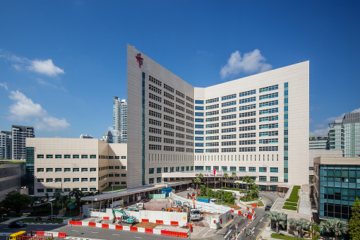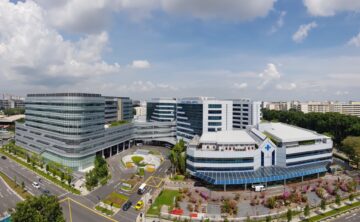by Eric Feigenbaum

Two of the most frightening words in America: Medical Debt. And this nightmare is not just something you hear as an anecdote or cautionary tale. One in three of the people reading these words are likely to have medical debt.
In 2022 roughly 100 million Americans – almost one-third of the population – were saddled with healthcare debt. Yet, more than 90 percent of Americans have some form of health insurance – because it’s less frequently a problem of being uninsured, but underinsured that puts people behind the eight ball. Unsurprisingly, when a problem is so impactful and pervasive, at least some members of the media turn their attention to it.

ProPublica journalist Marshall Allen has been researching and writing about medical bills for more than 20 years – following up on readers’ emails and exploring their medical debt stories. From hospitals that gouge to insurance that is unknowingly cancelled because a credit card wasn’t processed correctly, the ways Americans find themselves paying for their most difficult, painful and vulnerable moments are innumerable. And for whatever kindness they may have received when getting treatment, the billers and collections agents who follow can be heartless.
As a result, many developed countries hold America up as the model of what they don’t want in a healthcare system. The thinking is that healthcare is a human right, not a luxury.
The problem in the American system isn’t typically the quality of care – we have some of the best medical facilities in the world along with cutting edge treatments and technology. It’s that the patient can’t typically control the costs. In the midst of needing life-saving medical care, neither patient, patient’s family nor medical providers can or should consider cost.
Only when a car accident or heart attack drives the patient $100,000 into debt, something has gone terribly wrong.
On the other hand, American technological innovation drives medical care around the world. And it’s no accident America innovates – the rewards of capitalism drive research and development.
Singapore is a young country – independent in 1965. Its founders had many models to observe when deciding how their healthcare system would work. Fairly consistently and in keeping with their collectivist values, Singapore’s leadership pursued socialistic aims using capitalistic methods.
There was no doubt access to affordable, high quality medical care was necessary to Singapore’s stability and growth. But Singapore’s founders also embraced what Founding Prime Minister Lee Kuan Yew called “the no beggar bowl society.” Everyone needed to pull their own weight, while the government’s job was in essence to level the playing field.
Singapore’s approach can best be seen by two seemingly paradoxical Lee quotes:
Speaking of his time studying law in Britain:
“Soon after the National Health Service Act was passed in 1948, I went to collect my spectacles from an optician in Regent Street in Cambridge,” Lee said in an interview. “I had expected to pay between five and six pounds for them. At the counter the optician proudly told me that I did not have to pay for them, and instead gave me a form to sign. I was delighted and thought to myself that this was what a civilized society should be. What struck me most was the fairness of the system. The government was creating a society that would get everybody — rich or poor, high or low or middle class — on to one broad band of decent living standards. And this although there were still shortages”
However much Lee may have appreciated Britain’s endeavor, his own sense assessment of human nature kept Singapore from embracing a national, socialized healthcare system:
“The ideal of free medical services collided against the reality of human behavior, certainly in Singapore. My first lesson came from government clinics and hospitals. When doctors prescribed free antibiotics, patients took their tablet or capsules for two days, did not feel better, and threw away the balance. They then consulted private doctors, paid for their antibiotics, completed the course, and recovered.”
Accordingly, Singapore forged its own path to universal healthcare.
First, the government created national health insurance in which everyone has always participated with no regard for age or preexisting conditions. Only the Singaporean taxpayer doesn’t pick up the tab. Instead, Singaporeans and permanent residents are required to allocate a portion of their Central Provident Fund withholdings (similar to our Social Security only with more versatile uses) toward healthcare. These set-aside funds are debited by healthcare providers through the universal insurance plan. In essence, each person funds their own healthcare in what can more accurately be described as a healthcare saving account than an insurance plan.
But what about economic disparity? Doesn’t that create the very inequality that plagues the American system?
This is where the field-leveling comes in.
Singapore chose to build and operate several very large government hospitals ranging from 800 to 1,300 beds (excluding Woodbridge/Institute of Mental Health with a 2,000-bed capacity). With a goal to make healthcare affordable to all Singaporeans, the government established a tiered system of wards ranging from private air-conditioned suite A Class wards to 80-bedded fan-cooled D Class wards.
Conceptually, the medical care is the same throughout a hospital, only the creature comforts vary in the same way everyone on an airplane reaches the same destination using the same pilots and flight crew, even if their onboard experience varies. Likewise, those in D Class wards pay far less than those on an A Class ward.
Moreover, the Singaporean government chose to bargain with pharmaceutical manufacturers – effectively giving all their medical facilities a greater, collective purchasing power which reduced the cost of most drugs in Singapore.
However, Singapore’s leadership realized it was better at creating innovative systems and concepts than it was running a healthcare business. As it did with so many other government-founded services, in the 1990’s Singapore spun its public medical facilities into two public-private companies, reasoning that a private company can more efficiently manage itself while the government retained majority ownership to ensure the public interest is met.
By controlling both the supply of healthcare and the customer’s ability to afford it, Singapore brought healthcare within broad reach – but perhaps not the universal reach it originally sought. Increasing life-spans not only meant the average citizen was consuming more healthcare, but frequently older Singaporeans were less educated and had lesser means.
As part of the “no beggar bowl” approach, Singapore allows people to transfer money from their Central Provident Fund accounts to those in need of more healthcare funds. The government has strongly encouraged Singaporean families to “chip in” to support their elderly and economically struggling members.
Still, family bonds alone cannot solve all economic hardships. Therefore, Singapore has Medifund – a pot of government money it distributes to those in need of additional contributions to their universal healthcare accounts. This is essentially the Singaporean answer to Medicaid, only instead of being a public-option insurance plan, Medifund works more like a scholarship fund, giving lump-sums to “top up” citizen’s healthcare accounts based on applicants’ circumstances. Approximately 18 percent of Singaporeans drew a little more than $120 million US dollars in the 2022-2023 fiscal year. That means Singapore spends an average of $110 per Medifund recipient per year while the average federal Medicaid spend per participant was $7,593 in 2021 with a range of roughly $3,000 per year for children to almost $19,000 per year for seniors.
All things considered, the outcome is astonishing. A country of 5.64 million pays 1.5 percent in per capita public healthcare subsidies while operating a large, high-quality system of self-sufficient public-private and completely private hospitals most of which have US-issued accreditations. It also has universal healthcare and the fifth longest expected lifespan on earth of 84.19 years for someone born today – a more than five-year gain over the United States.
Not only has going its own way been a success for Singapore, but it has proved there is a middle way between free-market and socialized healthcare systems. Universal healthcare without significant welfare spending is possible.
Of course, that doesn’t mean the United States or any other country can simply replicate the Singaporean system. Under the best of circumstances with the least political resistance, it would take massive reform and overhaul to our existing systems. The fact that withholdings of today’s workers funds the Medicare and Medicaid bills of current beenficiaries makes it difficult to find a path to creating a self-funded healthplan like Singapore’s.
At the same time, the United States is already struggling to figure out how to sustain its precarious forward-paying system. An overhaul may well be inevitable. If and when the time comes, good solutions will require creativity. Just as Singapore observed other first world countries when formulating its healthcare system, we may benefit from observing Singapore’s.
Enjoying the content on 3QD? Help keep us going by donating now.
